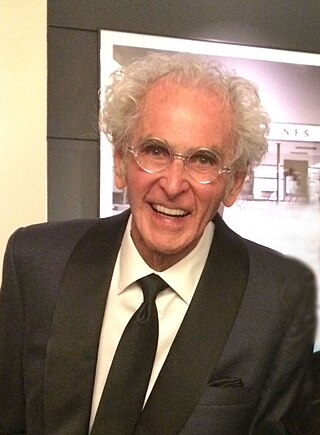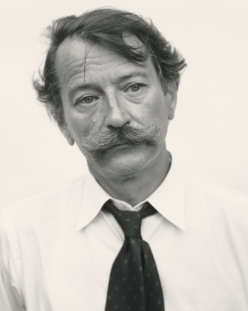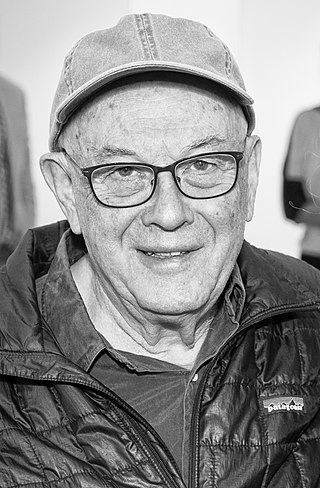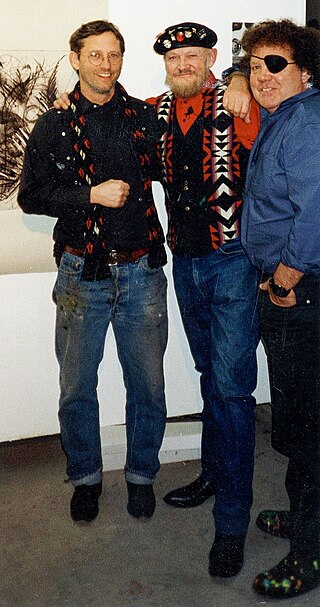Related Research Articles

Walker Evans was an American photographer and photojournalist best known for his work for the Farm Security Administration (FSA) documenting the effects of the Great Depression. Much of Evans' work from the FSA period uses the large format, 8×10-inch (200×250 mm) view camera. He said that his goal as a photographer was to make pictures that are "literate, authoritative, transcendent".

André Kertész, born Andor Kertész, was a Hungarian-born photographer known for his groundbreaking contributions to photographic composition and the photo essay. In the early years of his career, his then-unorthodox camera angles and style prevented his work from gaining wider recognition. Kertész never felt that he had gained the worldwide recognition he deserved. Today he is considered one of the seminal figures of 20th century photography.

Ernst Haas was an Austrian-American photojournalist and color photographer. During his 40-year career, Haas bridged the gap between photojournalism and the use of photography as a medium for expression and creativity. In addition to his coverage of events around the globe after World War II, Haas was an early innovator in color photography. His images were disseminated by magazines like Life and Vogue and, in 1962, were the subject of the first single-artist exhibition of color photography at New York's Museum of Modern Art. He served as president of the cooperative Magnum Photos, and his book The Creation (1971) was one of the most successful photography books ever, selling 350,000 copies.

Jerry Norman Uelsmann was an American photographer.
William Eggleston is an American photographer. He is widely credited with increasing recognition for color photography as a legitimate artistic medium. Eggleston's books include William Eggleston's Guide (1976) and The Democratic Forest (1989).

Eugène Atget was a French flâneur and a pioneer of documentary photography, noted for his determination to document all of the architecture and street scenes of Paris before their disappearance to modernization. Most of his photographs were first published by Berenice Abbott after his death. Though he sold his work to artists and craftspeople, and became an inspiration for the surrealists, he did not live to see the wide acclaim his work would eventually receive.

Joel Meyerowitz is an American street, portrait and landscape photographer. He began photographing in color in 1962 and was an early advocate of the use of color during a time when there was significant resistance to the idea of color photography as serious art. In the early 1970s he taught photography at the Cooper Union in New York City.

Garry Winogrand was an American street photographer, known for his portrayal of U.S. life and its social issues, in the mid-20th century. Photography curator, historian, and critic John Szarkowski called Winogrand the central photographer of his generation.

Thaddeus John Szarkowski was an American photographer, curator, historian, and critic. From 1962 to 1991 Szarkowski was the director of photography at New York's Museum of Modern Art (MoMA).
The term vernacular photography is used in several related senses. Each is in one way or another meant to contrast with received notions of fine-art photography. Vernacular photography is also distinct from both found photography and amateur photography. The term originated among academics and curators, but has moved into wider usage.

Henry Wessel was an American photographer and educator. He made "obdurately spare and often wry black-and-white pictures of vernacular scenes in the American West".

Bruce Landon Davidson is an American photographer. He has been a member of the Magnum Photos agency since 1958. His photographs, notably those taken in Harlem, New York City, have been widely exhibited and published. He is known for photographing communities usually hostile to outsiders.

Lorna Simpson is an American photographer and multimedia artist whose works have been exhibited both nationally and internationally. In 1990, she became the first African-American woman to exhibit at the Venice Biennale. She came to prominence in the 1980s and 1990s with photo-text installations such as Guarded Conditions and Square Deal that questioned the nature of identity, gender, race, history and representation. Simpson continues to explore these themes in relation to memory and history using photography, film, video, painting, drawing, audio, and sculpture.

Brian Wood is a visual artist working in painting, drawing and printmaking and formerly with photography and film in upstate New York and New York City.
Marvin Elliott Newman was an American artist and photographer.
Rosalind Fox Solomon is an American photographer based in New York City.
Nathan Lyons was an American photographer, curator, and educator. He exhibited his photographs from 1956 onwards, produced books of his own and edited those of others.

Hugh Merrill was an American artist, recognized internationally in the contemporary printmaking community. He has written articles on the redefinition of art, printmaking, and education and has taught and lectured on printmaking at over 75 universities, colleges, and schools worldwide.

Bill Dane is a North American street photographer. Dane pioneered a way to subsidize his public by using photographic postcards. He has mailed over 50,000 of his pictures as photo-postcards since 1969. As of 2007, Dane's method for making his photographs available shifted from mailing photo-postcards to offering his entire body of work on the internet.
John Cheney Wood was an American artist and educator who challenged traditional photography and often incorporated other mediums into his work. He was born in California in 1922. In 1943 he volunteered for the Army Air Corps, where he served as a B-17 pilot until 1945. At the time of his death he lived in Baltimore, Maryland, with artist Laurie Snyder.
References
- ↑ "Books As Aesthetic Objects: The Collection: Jaffe Center for Book Arts". Library.fau.edu. Retrieved 2011-11-22.
- ↑ "MoMA 1970 Press Release" (PDF). moma.org. Retrieved 2015-02-10.
- ↑ "MoMA 1973 Press Release" (PDF). moma.org. Retrieved 2015-02-10.
- ↑ "Art Institute of Chicago 1968 Exhibition History". artic.com. January 1968. Retrieved 2015-02-10.
- ↑ "PROJECTS: SONIA LANDY SHERIDAN AND KEITH SMITH" (PDF). The Museum of Modern Art. 1974-06-05. Retrieved 2011-11-22.
- ↑ "MoMA, "Mirrors and Windows"" (PDF). moma.org. Retrieved 2015-02-10.
- ↑ "Bruce Silverstein Gallery - Keith Smith, 2013". Brucesilverstein.com. Archived from the original on 2013-06-06. Retrieved 2013-05-31.
- 1 2 3 4 Smith, Keith A. (2000), Two hundred books by Keith Smith: book number 200, an anecdotal bibliography, Keith Smith Books, ISBN 978-0-9637682-7-8
- ↑ Smith, Keith A. (1984), Structure of the visual book, Visual Studies Workshop Press, ISBN 978-0-89822-036-0
- ↑ Smith, Keith A. (2004), Text in the book format (3 ed.), Keith Smith Books, ISBN 978-0-9740764-1-6
- ↑ Smith, Keith A.; Jordan, Fred A. (1998), Sewn and pasted cloth or leather bookbinding for book artists requiring no special tools or equipment, Keith Smith Books, ISBN 978-0-9637682-5-4
- ↑ Smith, Keith A. (2001), Smith's sewing single sheets, Keith Smith Books, ISBN 978-0-9637682-8-5
- ↑ "Bruce Silverstein Gallery - Keith Smith: Book by Book, 2011". Brucesilverstein.com. Retrieved 2011-11-22.
- ↑ "Bruce Silverstein Gallery - Keith Smith, 2013". Brucesilverstein.com. Retrieved 2013-05-31.
- ↑ "New York Art Book Fair, 2014". e-flux.com. Retrieved 2015-02-10.
- ↑ "Morgan Library "A Collective Invention"". hyperallergic.com. 13 February 2014. Retrieved 2015-02-10.
- ↑ "Philadelphia Museum of Art - Exhibitions - Keith Smith at Home". www.philamuseum.org. Retrieved 2020-08-28.